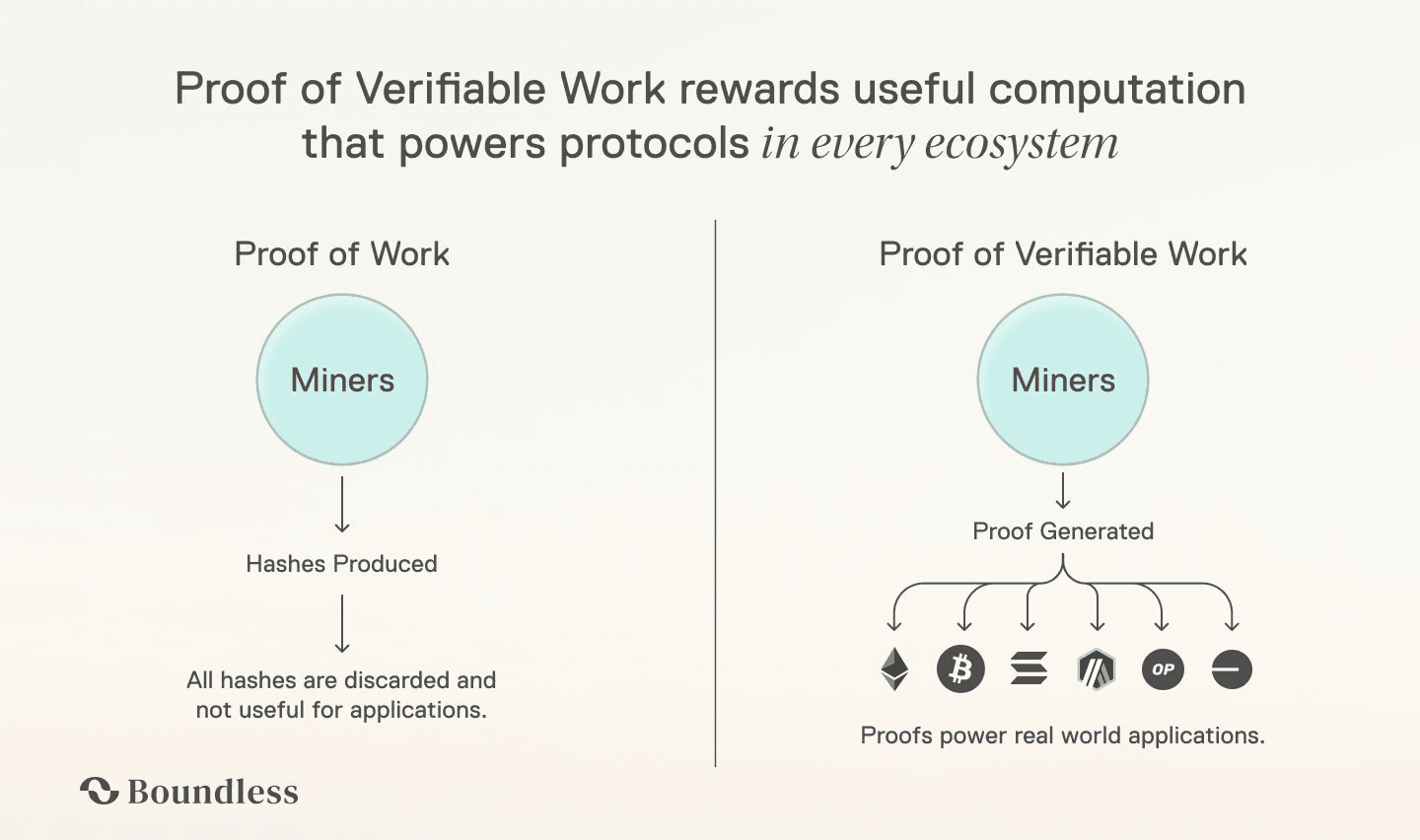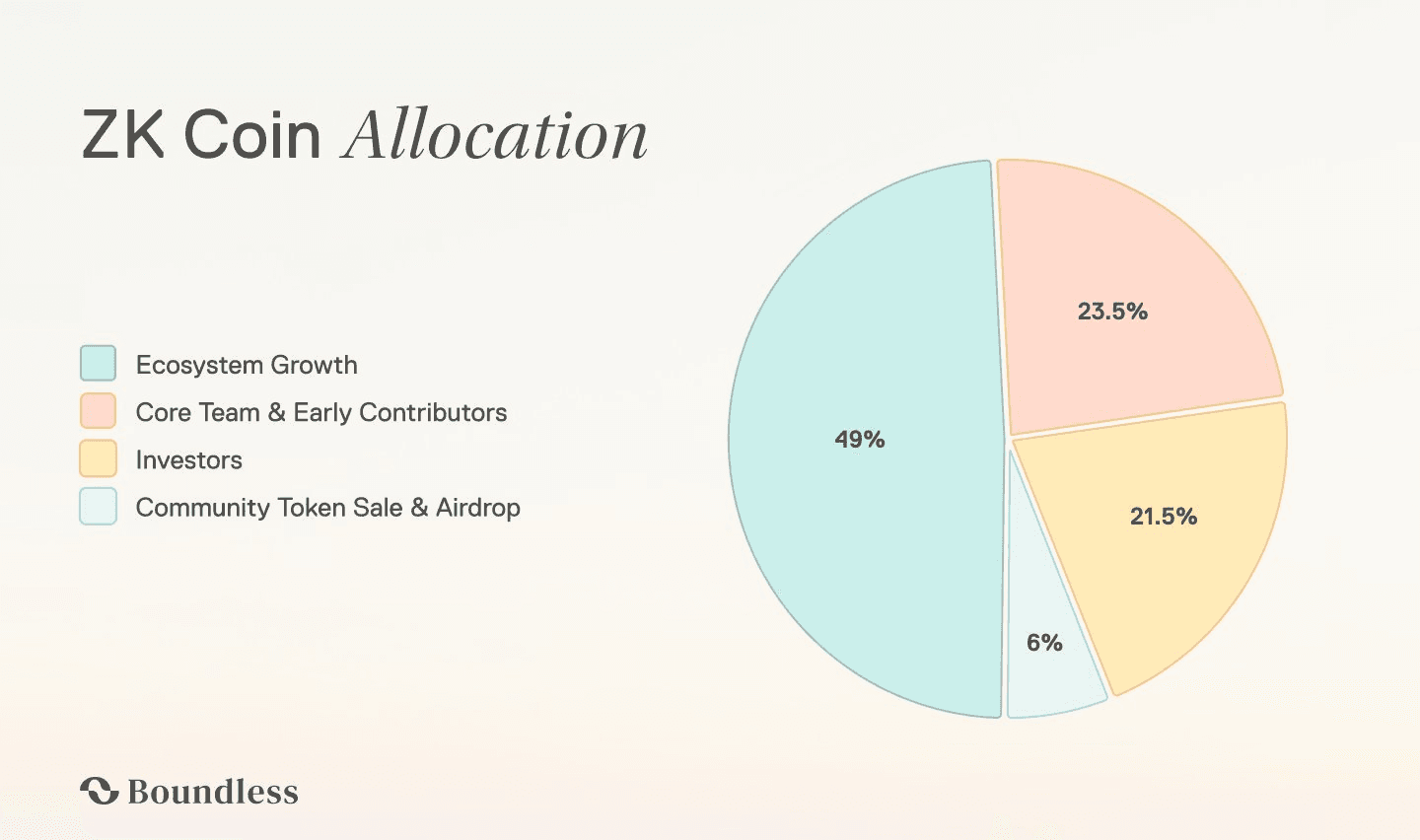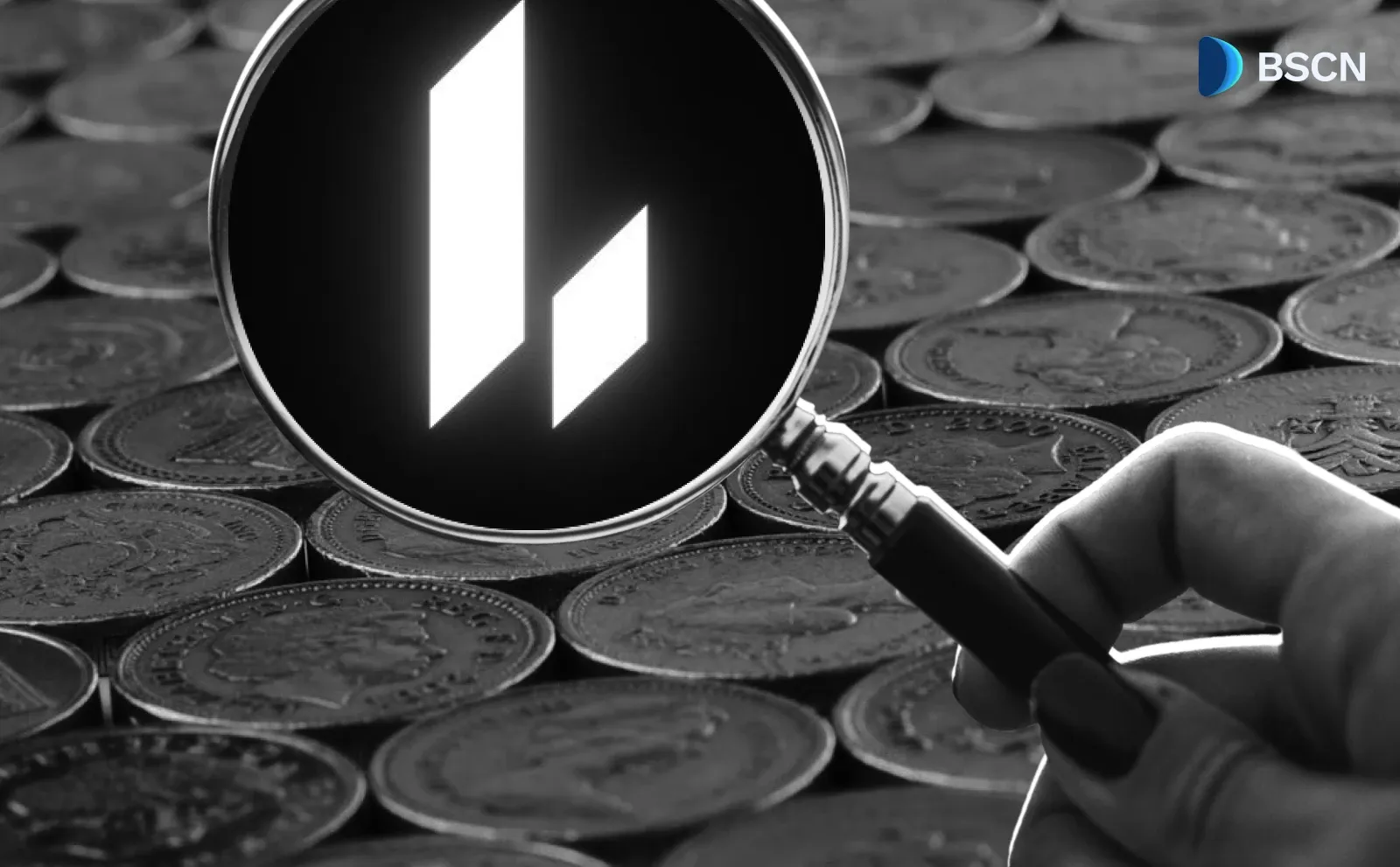Deepdive
(Advertisement)
What is Boundless? Exploring the Universal ZK Protocol

Boundless launched its mainnet, introducing a universal protocol for decentralized zero-knowledge proofs with verifiable and incentivized proving.
Miracle Nwokwu
September 16, 2025
(Advertisement)
Table of Contents
Boundless launched its mainnet on September 15, 2025, marking a step forward in decentralized zero-knowledge proof systems. Developers and researchers have long sought ways to make ZK proving more accessible and incentivized - Boundless aims to address that need through its universal protocol. Provers now can earn rewards for their computational efforts, which turns proof generation into a productive activity. The protocol builds on established ZK techniques but introduces fresh mechanisms to sustain participation.
Origins and Core Concept
Boundless emerged from efforts to decentralize ZK proof generation, as zero-knowledge proofs allow one party to prove a statement's truth without revealing underlying data. They power privacy features in blockchains and beyond, yet generating these proofs demands significant computing power. Centralized services often handle this, raising concerns about trust and scalability, so Boundless seeks to distribute that workload across a network of provers.
The protocol operates as a universal layer that supports various ZK circuits and proof systems, from SNARKs to STARKs. Users submit proof requests via an API, and provers in the network compete to fulfill them. Successful proofs get verified on-chain, ensuring compatibility with multiple blockchains. Ethereum, Solana, and others can integrate without custom builds.
At its heart, Boundless uses a peer-to-peer network where nodes run specialized software to receive tasks. The system aggregates proofs efficiently and handles recursion for complex computations. Developers praise the flexibility, as one can prove anything from simple arithmetic to intricate smart contract executions.
Technical Details of the Protocol
Boundless relies on a modular architecture, with the core consisting of three layers: the proving layer, verification layer, and coordination layer. The proving layer executes ZK circuits, while provers use GPU or CPU resources to compute proofs. The protocol supports Plonk and other arithmetization schemes, optimizing for speed with parallel processing.
Verification happens quickly, as once a proof arrives, the network checks its validity using a succinct verifier. This step prevents invalid submissions, and the coordination layer manages task distribution. It uses a gossip protocol to broadcast requests, with provers staking ZKC to participate and ensure skin in the game.
Security forms a key pillar, as Boundless incorporates formal verification for its circuits and resists common attacks like denial-of-service. The protocol uses threshold signatures for aggregation, allowing multiple provers to contribute to a single proof and reduce single points of failure. Bandwidth requirements stay low, around 1-2 MB per proof request.
Implementation details reveal thoughtful engineering, with the software stack including Rust for core components. It integrates with WebAssembly for circuit compilation, so users compile circuits offline using tools like Circom or Halo2. Then, they upload to Boundless via the dashboard, where the system tracks proof status in real-time. APIs return job IDs for polling.
One standout feature is recursive proving, as Boundless can prove proofs of proofs, enabling scalability for large computations. For instance, a rollup operator might use it to batch thousands of transactions, with the recursion depth reaching up to 10 levels without performance drops. Benchmarks show proof times under 10 seconds for medium circuits on standard hardware.
The protocol also handles non-deterministic computations, even though traditional ZK focuses on deterministic ones. Boundless extends to probabilistic proofs, which are useful for machine learning verifications and broaden applications. Researchers experiment with it for secure multi-party computation.
Proof of Verifiable Work: A New Incentive Mechanism
Proof of Verifiable Work, or PoVW, sets Boundless apart, as traditional proof-of-work rewards hash computations, but PoVW rewards useful ZK proofs instead. Provers generate proofs for real tasks, and the system measures work by proof size and complexity. Rewards scale accordingly.

Here's how it works: a user submits a proof request with a bounty in ZKC, and provers bid on the task based on estimated effort. The first valid proof claims the bounty, and the network verifies it on-chain. If accepted, the prover receives the reward plus a base emission.
PoVW introduces "Proof of Proof," which verifies that a prover indeed performed the work and uses a meta-proof to attest computation integrity. This prevents cheating, like submitting pre-computed proofs, and the mechanism draws from verifiable delay functions. It ensures timeliness too.
In practice, PoVW fosters a marketplace where demand comes from dApps needing privacy, and supply grows as more provers join. Early data shows average rewards at 0.5 ZKC per proof, with complexity multipliers applying for harder tasks. The system adjusts difficulty dynamically to maintain network health.
Critics might note energy use, since ZK proving consumes power, similar to mining. However, Boundless mitigates this with efficient algorithms, and provers can run on renewable sources. The focus on useful work differentiates it from wasteful hashing.
The ZK Coin: ZKC Mechanics and Utility
ZKC serves as the native token of Boundless, powering the ecosystem with initial supply at 1 billion tokens. Initial distribution allocates 49% to ecosystem growth, 23.5% to core team and early contributors, 21.5% to investors, and 6% for the token sale & airdrop.

ZKC has multiple roles, as provers stake it to join the network, with staking requiring 100 ZKC minimum. This secures against sybil attacks, and users pay bounties in ZKC for proof requests. Verifiers earn fees for checking proofs, while governance uses ZKC for voting on upgrades.
Tokenomics emphasize sustainability, with emissions following a halving schedule every four years, and PoVW minting new ZKC proportional to network activity. This ties supply to utility, and there’s a burn mechanism in place to reduce circulating supply. A portion of fees burns 10% of ZKC.
Trading launched on mainnet, with the token live across several top exchanges, including Bybit, Kucoin, and Bitget. As of writing, Boundless ($ZKC) trades at $0.873, with a current market capitalization of approximately $23 million, per Coingecko data. Holders can delegate stakes to trusted provers for yields up to 8% APY.
Detailed economics reveal balance, as inflation starts at 10% annually, tapering to 2%. This supports early growth, and the treasury funds grants for integrations. Developers can apply via the Boundless forum, with approved projects receiving up to 50,000 ZKC.
ZKC bridges to other chains via wrapped versions, enabling cross-chain proving. For example, a Solana dApp pays in SOL, converted to ZKC internally.
The Boundless Ecosystem: Integrations and Applications
The ecosystem revolves around tools and partnerships, with the developer kit including SDKs for JavaScript and Rust. It simplifies proof submission, and tutorials cover basic to advanced use cases. The comprehensive guide, released earlier in May, walks through setup.
Key applications span DeFi and identity, as rollups use Boundless for settlement proofs, and privacy wallets generate ZK credentials. One integration verifies age without revealing birthdates, while another enables anonymous voting in DAOs.
Partnerships expand reach, as Boundless collaborates with Polygon for zkEVM support and works with Aleo on advanced circuits. The ecosystem fund backs startups building on the protocol, with grants focusing on scalability tools.
Community drives growth, as the Discord server hosts AMAs with core devs, and hackathons award ZKC prizes. Over 500 developers registered for the latest event, and feedback shapes updates, like improved API rate limits.
Nodes form the backbone, as anyone runs a prover node with 8GB RAM minimum, and the dashboard monitors uptime. Rewards accrue daily, with full nodes validating the chain while light clients query proofs.
Future expansions target AI verifications, as Boundless plans ZK for model inferences, which could secure federated learning. The ecosystem remains open-source, and contributions via GitHub earn bounties.
Milestones and Path Forward
Boundless traced a steady path to mainnet, with testnet launching in Q1 2025 and processing 10,000 proofs in beta. Security audits by Trail of Bits cleared major vulnerabilities, and the team fixed 15 issues pre-launch.
Mainnet activation on September 15 brought PoVW online, and within hours, 200 provers joined. Daily proofs hit 5,000 by day two, and the ZK Coin airdrop rewarded early testers with 1% of supply.
Upcoming milestones include v1.1 in Q4 2025, adding support for FRI protocols, while a mobile prover app follows in 2026. The roadmap outlines cross-chain bridges by mid-year.
Boundless positions itself as infrastructure that enables ZK adoption without centralization. As the network matures, it could underpin broader Web3 privacy, and developers watch closely. The protocol's success hinges on sustained participation, but for now, it delivers on its promise of verifiable, incentivized computation.
Sources:
Boundless Whitepaper: http://read.boundless.network/
A Comprehensive Guide to Boundless: https://x.com/boundless_xyz/status/1920862141944389695?s=46
Introducing ZK Coin: https://x.com/boundless_xyz/status/1957498468093587905
Proof of Work (Wikipedia): https://en.wikipedia.org/wiki/Proof_of_work
Read Next...
Frequently Asked Questions
What is Boundless in blockchain?
Boundless is a decentralized universal protocol for zero-knowledge (ZK) proofs. It allows provers to earn rewards for generating verifiable proofs, making proof generation both incentivized and scalable across multiple blockchains.
How does Boundless Proof of Verifiable Work (PoVW) differ from traditional Proof of Work (PoW)?
PoVW rewards provers for generating useful ZK proofs, while PoW rewards solving arbitrary hash puzzles. PoVW ties computation to real applications like privacy and scalability, making it more efficient and practical than energy-intensive hashing.
What role does the ZK Coin (ZKC) play in Boundless?
ZKC is the native token of Boundless. It is used for staking by provers, paying bounties for proof requests, rewarding verifiers, and governance voting. Its tokenomics include a halving schedule, fee burns, and incentives for ecosystem growth.
What makes Boundless unique compared to other ZK protocols?
Boundless introduces a universal proving layer, recursive proving for scalability, PoVW for incentivization, and modular architecture. It focuses on decentralization, efficiency, and broad applicability across blockchain ecosystems.
Disclaimer
Disclaimer: The views expressed in this article do not necessarily represent the views of BSCN. The information provided in this article is for educational and entertainment purposes only and should not be construed as investment advice, or advice of any kind. BSCN assumes no responsibility for any investment decisions made based on the information provided in this article. If you believe that the article should be amended, please reach out to the BSCN team by emailing [email protected].
Author
 Miracle Nwokwu
Miracle NwokwuMiracle holds undergraduate degrees in French and Marketing Analytics and has been researching cryptocurrency and blockchain technology since 2016. He specializes in technical analysis and on-chain analytics, and has taught formal technical analysis courses. His written work has been featured across multiple crypto publications including The Capital, CryptoTVPlus, and Bitville, in addition to BSCN.
(Advertisement)
Latest News
(Advertisement)
Crypto Project & Token Reviews
Project & Token Reviews
Comprehensive reviews of crypto's most interesting projects and assets
Learn about the hottest projects & tokens
Latest Crypto News
Get up to date with the latest crypto news stories and events













